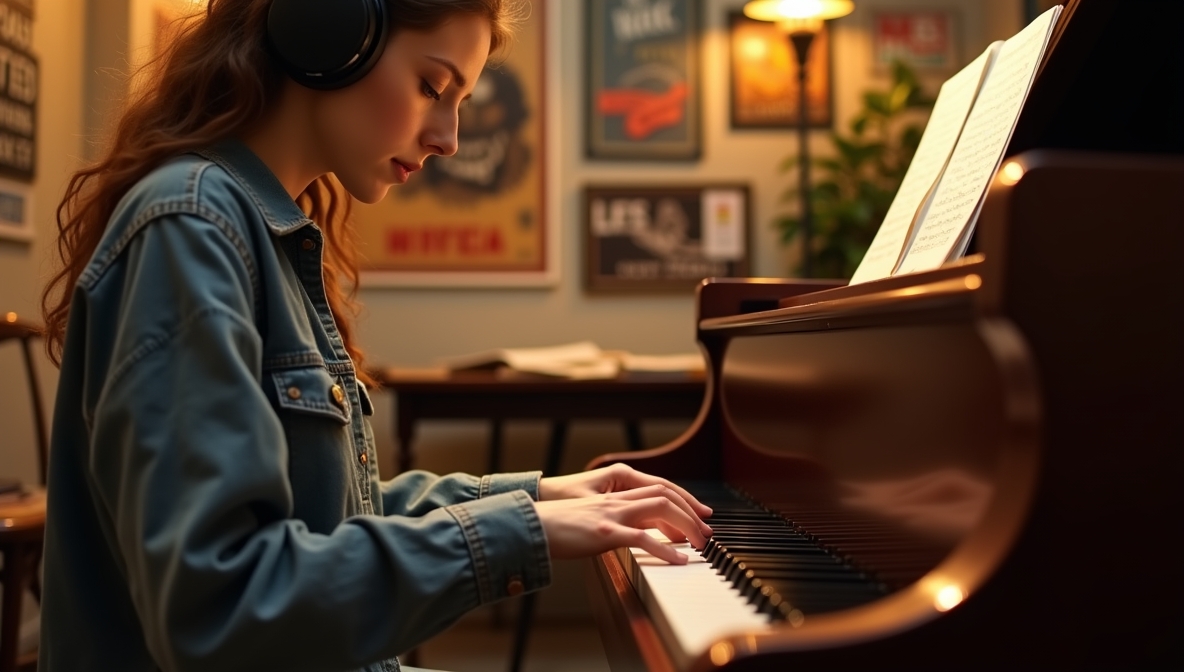How to Play Piano Without Reading Sheet Music

You can learn to play piano without ever reading a single note of sheet music—and no, it’s not just for musical prodigies. Many self-taught pianists rely on their ears, instincts, and pattern recognition to master songs, improvise, and enjoy the instrument on their own terms.
Whether you're learning by ear, using chord-based methods, or simply following your favorite songs on YouTube, this approach can be just as effective—and in some ways, more freeing—than traditional sheet music-based methods.
Why Learn to Play by Ear?
Learning piano by ear unlocks an entirely different relationship with the instrument. You’re not bound by the written page; you’re connected directly to the sound. According to Pianist Magazine, ear-based playing promotes quicker transposition, improvisation, and emotional expression.
Even legends like The Beatles, Elton John, and Ray Charles often relied on instinct and listening rather than notation. The Mystic Keys confirms that intuitive playing is not only possible—but powerful.
Step-by-Step Guide to Playing Piano Without Sheet Music
1. Start with Songs You Already Know
- Pick a tune that's already burned into your memory—“Happy Birthday,” “Let It Be,” or any pop melody you can hum. As Roland notes, familiarity makes it easier to connect what you hear to the keys beneath your fingers.
2. Train Your Ear with Intervals
- The key to playing by ear is hearing the space between notes, known as intervals. Want to recognize a perfect fifth? Think of the Star Wars theme. Tools like Functional Ear Trainer are a go-to, also you can explore guided ear training exercises specifically for pianists.
3. Learn Basic Chord Progressions
- Most pop and rock songs use the same 3–4 chords over and over. Start with I–IV–V or I–V–vi–IV patterns—think C–F–G or C–G–Am–F. Once you learn to identify these by ear, entire playlists will open up to you.
- Explore these foundations in Understanding Chord Progressions—a must-read if you’re building your ear and songwriting skills side-by-side.
4. Break Songs into Sections
- Trying to play an entire song at once is overwhelming. Focus on the intro, then the verse, then the chorus. It’s how blind pianists like Nobuyuki Tsujii learn music: one phrase at a time (Wikipedia).
5. Play Along with Recordings
- Pick a song and try to match what you hear—note by note, chord by chord. Start slow. Loop difficult parts. This method helps build muscle memory and rhythm without a metronome.
- Hark Music also outlines this technique in their guide to playing piano with no scores, showing how to develop timing and tone instinctively.
6. Sing or Hum What You Play
- Using your voice helps you internalize pitch, phrasing, and rhythm. You don’t have to be a great singer—just match the melody and translate it onto the keyboard.
- This method is especially effective for beginners who struggle with pitch recognition.
7. Record and Playback Your Practice
- You may not notice mistakes while playing—but your playback won’t lie. Reviewing recordings is a fast way to catch bad habits and hear where you need to improve.
- In fact, Golden Key Piano School encourages this as part of developing aural awareness.
Real People Do It—So Can You
On Reddit, pianists often describe a kind of “musical foresight”—where they hear a few seconds ahead and let their hands follow. That’s not magic; it’s trained instinct. You can develop this sense with practice.
Tools to Help You Learn
- Functional Ear Trainer – Great for learning intervals and chord qualities.
- Synthesia – A falling-note piano app that helps you learn by watching instead of reading (Wikipedia).
- Free Piano Challenge – Their 7-day piano challenge gives you a structured, video-based way to build core skills by ear.
- AI Music Generator – Want to play along with custom backing tracks? Try this tool to create your own music and practice improvisation.
Visual Learning Bonus
Check out Pianote’s YouTube tutorial, where the instructor teaches Ed Sheeran’s “Photograph” completely by ear—no sheet music, no chord charts, just listening and feeling.
Final Thoughts
- Reading sheet music is a great skill—but it’s not the only way to become a pianist. Playing by ear builds a stronger musical connection, faster creativity, and deeper listening skills. If you're willing to be patient, consistent, and curious, you'll unlock a whole new way of expressing yourself at the piano.
- And when you're ready to go deeper, here are dozens of resources—from music theory essentials to royalty-free piano tracks—to keep you moving forward.
